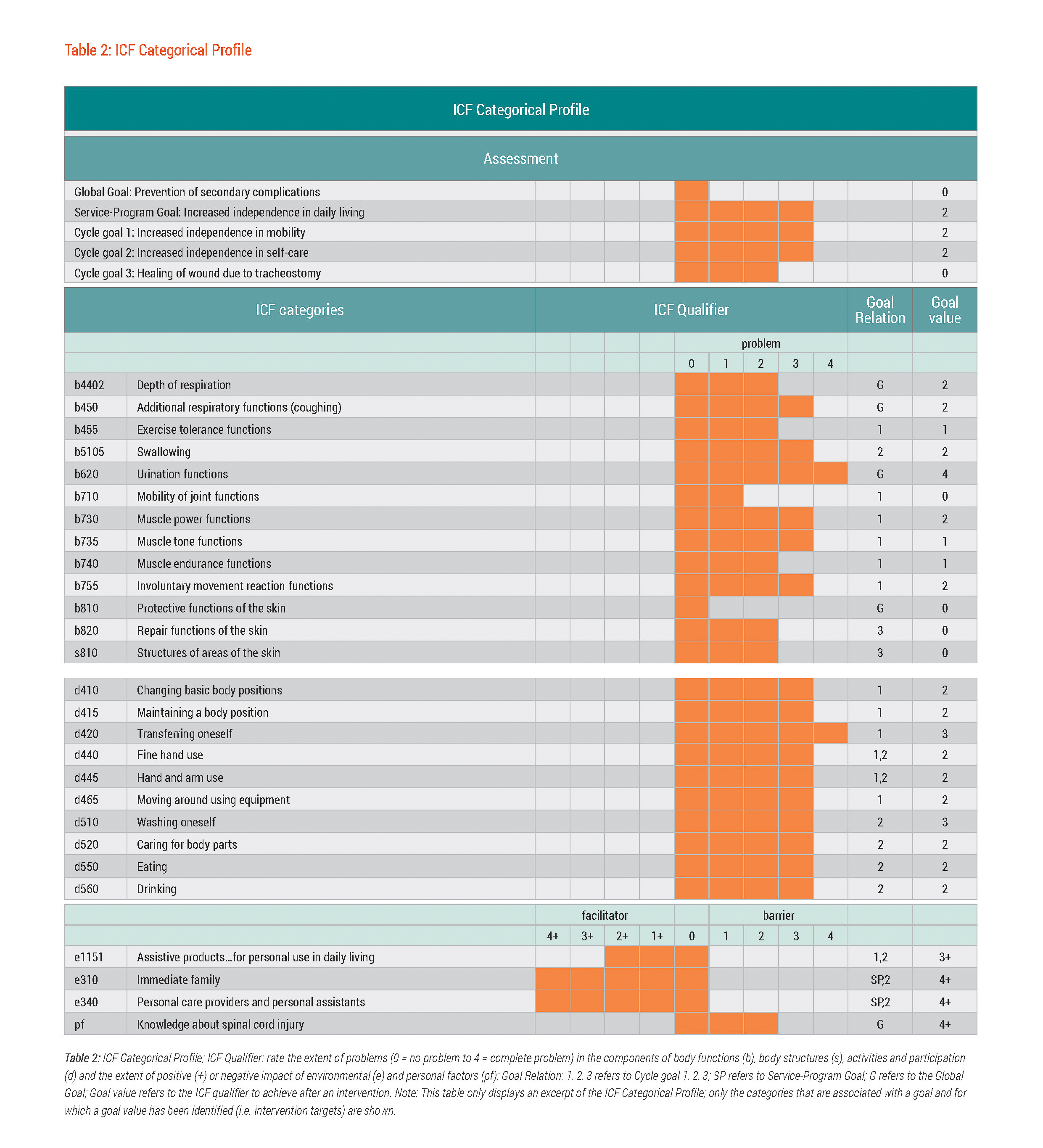Goal-setting/Determination of Intervention Targets
The goals and intervention targets for Mr. Wun's rehabilitation were determined by his rehabilitation team with consideration of Mr. Wun's expressed goals and wishes. His rehabilitation team was made up of a physician, nurse, and physical and occupational therapists. Based on the results of the assessment conducted by the rehabilitation team and the statements made by Mr. Wun about his functioning and what he would like to achieve in this Rehab-Cycle®, a global goal, a service-program goal, and three cycle goals were set.
The rehabilitation team defined as a long-term global goal the ‘prevention of secondary complications’. As a service-program goal i.e. the goal to achieve at the end of Mr. Wun's one-month Rehab-Cycle® the rehabilitation team decided to strive for ‘increased independence in daily living’. As smaller steps to help meet the service-program goal, the following cycle goals were also set:
- Increased independence in mobility
- Increased independence in self-care
- Healing of wound due to tracheostomy
With the exception of cycle goal 1, the rehabilitation team did not set other goals that were directly related to environmental accessibility, despite being a major issue in Mr. Wun’s life. Unfortunately, the possibility of providing interventions to improve environmental accessibility in Mr. Wun's community was limited, especially considering that this particular Rehab-Cycle® was planned to last only one month. Consequently, the interventions provided focused on body functions and activities of daily living.
All of Mr. Wun's goals were documented on the ICF Categorical Profile, a visual depiction (as a bar graph) of a person's functioning status at the time of assessment showing the ICF qualifier values for selected ICF categories considered relevant to the person's case. See table 2.

Table 2: ICF Categorical Profile; ICF Qualifier: rate the extent of problems (0 = no problem to 4 = complete problem) in the components of body functions (b), body structures (s), activities and participation (d) and the extent of positive (+) or negative impact of environmental (e) and personal factors (pf); Goal Relation: 1, 2, 3 refers to Cycle goal 1, 2, 3; SP refers to Service-Program Goal; G refers to the Global Goal; Goal value refers to the ICF qualifier to achieve after an intervention. Note: This table only displays an excerpt of the ICF Categorical Profile; only the categories that are associated with a goal and for which a goal value has been identified (i.e. intervention targets) are shown.
Setting the global, service-program and cycle goals was essential for the subsequent selection of the intervention targets. Intervention targets are the ICF categories in the ICF Categorical Profile that correspond to any of the goals set and are intended to be addressed with specific interventions.